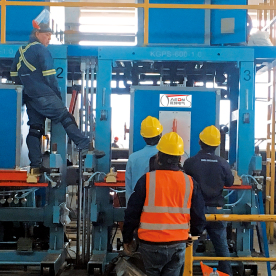
Optimizing your Machining Processes: The Benefits of Using Sharp HSS Blades for Enhanced Performance and Precision
****
In the world of machining applications, where precision and efficiency are paramount, the choice of cutting tools can make all the difference. Among these, High-Speed Steel (HSS) blades stand out for their versatility and performance. A sharp HSS blade can significantly enhance machining operations, impacting both the quality of the finished product and the overall productivity of the manufacturing process. This article delves into the importance of sharp HSS blades, their applications, and how they contribute to optimized machining processes.
Understanding High-Speed Steel (HSS)
High-Speed Steel is a tool steel that can withstand the high temperatures generated during machining without losing its hardness. This characteristic is particularly essential for cutting tools like blades, as they often operate under extreme conditions. HSS blades can be sharpened multiple times and are less prone to wear compared to other materials, making them a preferred choice for many machining applications.
The Importance of Sharpness in HSS Blades
The sharpness of HSS blades directly influences their cutting performance. A sharp blade reduces cutting resistance, leading to several benefits:
1. **Improved Cutting Efficiency:** Sharp blades require less force to cut through materials, which not only conserves the tool but also allows for faster machining speeds. This increased efficiency contributes to shorter production cycles and higher throughput.
2. **Better Surface Finish:** A sharp cutting edge minimizes the chances of tearing or excessive burnishing of the material surface, leading to a finer surface finish. This is particularly important in industries where part aesthetics and tolerances are critical, such as automotive or aerospace manufacturing.
3. **Extended Tool Life:** When an HSS blade is sharp, it experiences less wear and tear during machining. This durability extends the life of the tool, reducing replacement costs and downtime associated with tool changes.
4. **Less Heat Generation:** Blades that cut effectively, thanks to their sharpness, generate less heat. Excessive heat can lead to thermal damage in both the tool and the workpiece, affecting their properties and performance. By minimizing heat generation, sharp HSS blades ensure greater stability in the machining process.
Applications of Sharp HSS Blades
Sharp HSS blades find applications across a range of industries and processes, including:
– **Milling:** In milling operations, sharp HSS blades enable precision machining of complex geometries in a variety of materials, from soft metals to hardened steels.
– **Turning:** When used in lathes, sharp HSS cutting tools yield high-quality cylindrical features with minimal run-out, enhancing the roundness and symmetry of the machined parts.
– **Drilling:** Sharp HSS drill bits achieve precise entry and exit holes and reduce the risk of bit breakage, increasing the reliability of drilling operations.
– **Slotting and Grooving:** In slotting applications, sharp blades create clean and accurate slots, which are crucial for fitting parts together seamlessly.
Selecting the Right Sharp HSS Blade
To maximize the benefits of sharp HSS blades, selecting the right blade for a specific application is critical. Factors to consider include:

Optimizing your Machining Processes: The Benefits of Using Sharp HSS Blades for Enhanced Performance and Precision
– **Material Type:** Different materials require specific blade geometries and sharpness levels. For example, cutting through hard metals necessitates a sharper and more durable edge.
– **Cutting Conditions:** The speed and feed rates should be optimized according to the sharpness of the blade and the machining parameters to achieve the best results.
– **Coating Technologies:** Some HSS blades come with coatings that enhance their performance further. Coatings such as titanium nitride (TiN) can help reduce friction and increase tool life.

Optimizing your Machining Processes: The Benefits of Using Sharp HSS Blades for Enhanced Performance and Precision
Maintenance and Sharpening Maintaining the sharpness of HSS blades is essential for prolonged performance. Regular inspections, along with timely sharpening, can ensure that the blades remain efficient and effective. Utilizing professional sharpening services or in-house grinding setups can help maintain the cutting edge while reducing operational costs.
Conclusion
In summary, the significance of a sharp HSS blade for machining applications cannot be overstated. From enhancing cutting efficiency and tool longevity to achieving better surface finishes, sharp HSS blades play a critical role in modern manufacturing. By investing in high-quality HSS cutting tools and commits to maintaining their sharpness, businesses can ensure that their machining processes are optimized for performance, efficiency, and quality. Such investments not only improve productivity but also contribute to the overall success and competitiveness of the manufacturing operation.Automatic Flying Saw Machine

